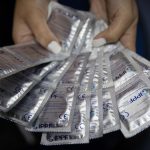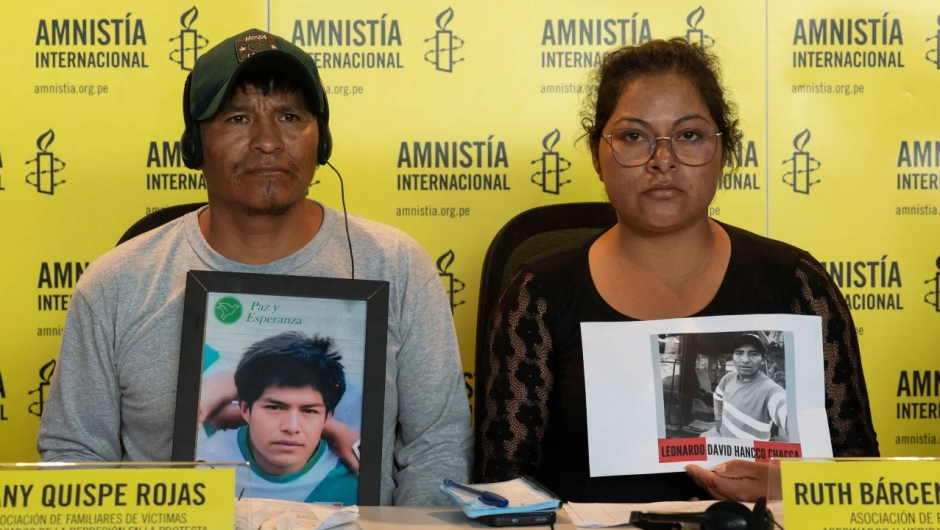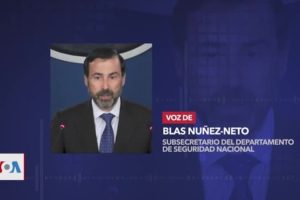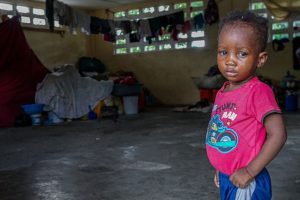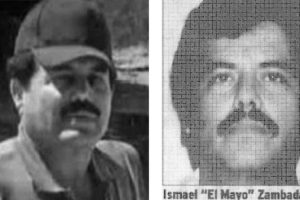( Spanish) — Peru’s security forces carried out widespread attacks on protesters with “extrajudicial killings” and “widespread use of lethal ammunition” earlier this year as they tried to contain mass protests that began in December 2022, according to Amnesty International.
The human rights group investigated the deaths of 25 people who lost their lives in the Ayacucho, Apurímac and Puno regions between December 7, 2022 and February 9, 2023. In total, 49 civilians died during the protests.

Peruvian Army soldiers stand guard in the main square of the central Andean city of Ayacucho on December 15, 2022, following the declaration of a national State of Emergency. Credit: Javier Adlemar/AFP/Getty Images
According to the Amnesty International report, many of the victims were under the age of 21, and among the documented cases there were six children.
The weeks-long protest movement in the Andean country was sparked by the ouster and detention of former President Pedro Castillo in December and fueled by deep discontent over living conditions and inequality in the country.
Although protests took place across the country, the greatest violence was recorded in the rural and indigenous south, which saw Castillo’s removal as another attempt by Peru’s coastal elites to belittle them.
According to Amnesty, during the documented period the country’s armed forces and national police used lethal force, such as bullets and weapons prohibited in police tasks, such as pellets, “illegitimately.”
Less-lethal force, such as tear gas, was also used “excessively, disproportionately, and at times unnecessary,” according to the report.

Residents of the Uros and Taquile islands on Lake Titicaca, which borders Bolivia, protest in the city of Puno, Peru, on January 24.
Credit: Juan Carlos Cisneros/AFP/Getty Images
Peruvian authorities claimed that the country’s security forces acted in self-defense. However, according to the evidence collected by Amnesty International, the wounds that caused the 25 deaths “occurred in parts of the body where they are most likely to be fatal, which would indicate that they were not random shots, but intentional.”
“In none of the cases was evidence found that the deceased person posed a risk to the life or integrity of the officials,” the report says.
“In several cases, the deceased, as well as the injured, were mere observers or passers-by,” the report concludes.
Extrajudicial executions and young victims
Of the 25 deaths documented by Amnesty International, at least 20 are considered extrajudicial killings. Fifteen of those victims were under the age of 21, according to the report.
The first known fatality during the protests was a 15-year-old boy, David Atequipe, who was shot in the back while observing protests in front of the Andahuaylas airport, in the Apurímac region, on December 11, according to the report from the autopsy documented by Amnesty.
Another 15-year-old boy, Christopher Ramos Aime, was shot a few days later while crossing the road in Ayacucho on December 15. Ramos worked at the local cemetery, near the airport, cleaning graves and headstones and helping visitors with flowers.
According to the autopsy seen by Amnesty International and the evidence gathered by the group, Ramos died from a “firearm projectile” that caused chest trauma. Ramos was not armed and did not pose any threat to the security forces, the organization concludes.
“They killed innocent people, my son was innocent, he was crossing the road when he was shot,” Hilaria Aime, Christopher’s mother, told tearfully on Wednesday.
Aime hopes her family can find justice after the report is released, adding that protesters and their communities have often been unfairly demonized by the Peruvian authorities.
“We hope that justice is done and people respect us, they are calling us terrorists, vandals and that is not the truth of what happened in Ayacucho.”
has not verified the circumstances of these deaths as described in the Amnesty report.

Dany Quispe and Ruth Barcena, who respectively lost their son and husband during different demonstrations, attend a press conference with representatives of Amnesty International in Lima, Peru, on February 16, 2023. Credit:
Cris Bouroncle/AFP/Getty Images
Amnesty also mentions the death of Beckhan Romario Quispe Garfias, an 18-year-old soccer coach who was shot in the head in Andahuaylas, Apurímac region, in December. previously reported on his case.
As previously reported by , Amnesty also maintains that attacks on protesters were carried out “with a marked racist bias” in southern Peru, where protesters faced a more violent response from security forces, leaving dozens of dead.
In Lima, the capital of Peru, similar protests took place, but there was only one death.
Response and narrative of the government of Peru
In this final report, Amnesty International notes that the Peruvian authorities, including Peruvian President Dina Boluarte and the Presidency of the Council of Ministers (PCM), praised the country’s security forces during the protests and “systematically supported and justified the actions of the forces of order, despite the increasingly clear evidence of their illegal action”.
“In addition, the state narrative stigmatized the protesters as terrorists and violent, contributing to the escalation of violence and encouraging law enforcement to continue acting in the same way,” the report highlights.
Authorities at the highest level failed to hold the armed forces and police accountable, despite “considerable evidence” pointing to the responsibility of the security forces in the dozens of deaths that occurred, Amnesty also says.

Boluarte speaks during a meeting with the foreign press, in Lima, Peru, on January 24. Credit:
Angela Ponce/Reuters
In a recent interview with a local media And in the face of criticism for the way in which her government has handled the protests, President Boluarte said that she and her ministers do not decide the protocols of the Armed Forces or the Police.
“They have their own law, but also their own protocols. Who do they obey? Their commands. We don’t have a command. I can be the Supreme Commander of the Armed Forces, but I don’t have a command, the protocols are decided by them,” Boluarte said.
contacted the president’s office, which declined to comment on the report’s conclusions. She also contacted the Peruvian Ministries of Defense and Interior. Both ministries told in February that they could not comment until the ongoing investigation by the Prosecutor’s Office was completed.
The Peruvian Prosecutor’s Office opened a preliminary investigation on January 10 against President Boluarte, Peruvian Prime Minister Alberto Otarola, and other ministers for alleged genocide, homicide, and serious injuries committed during the protests.
This Wednesday, Boluarte’s office told en Español that the president was invited to testify before the Prosecutor’s Office on May 31.
The Peruvian Prosecutor’s Office was also criticized in this final report for failing to carry out criminal investigations related to the deaths in the protests in a “prompt, thorough and impartial” manner. contacted the Prosecutor’s Office for comment.




